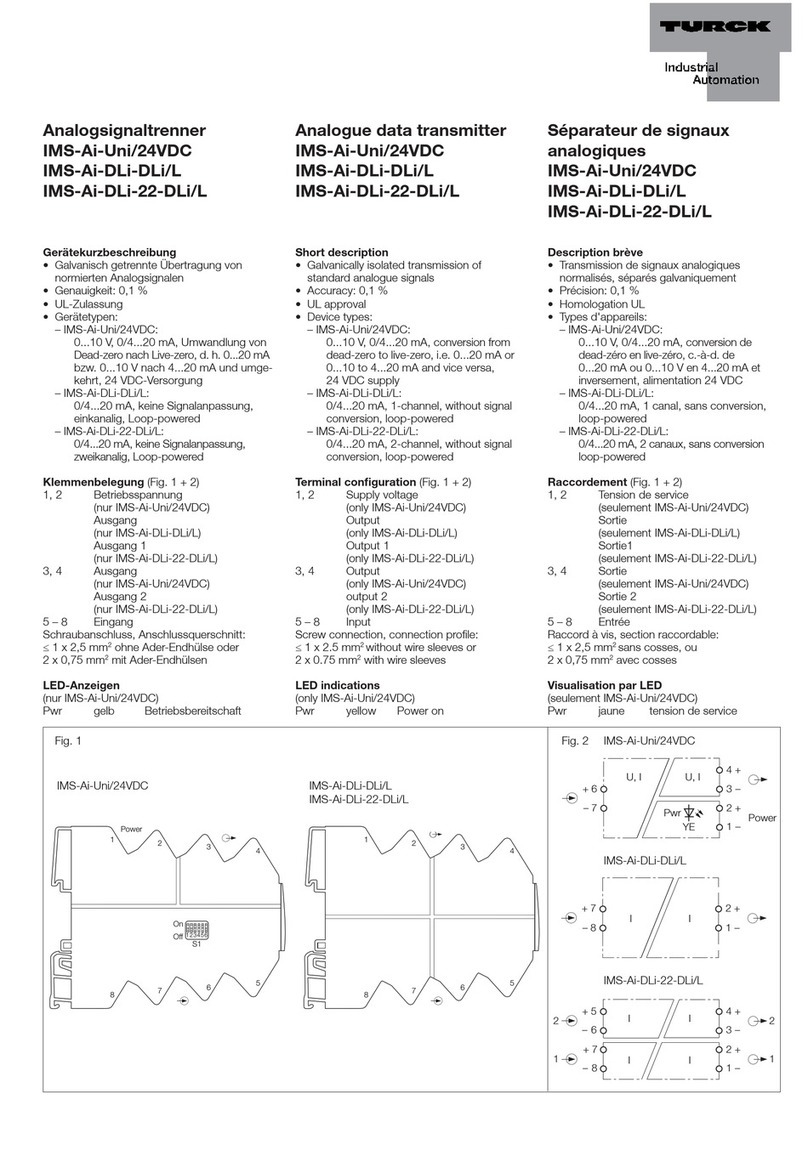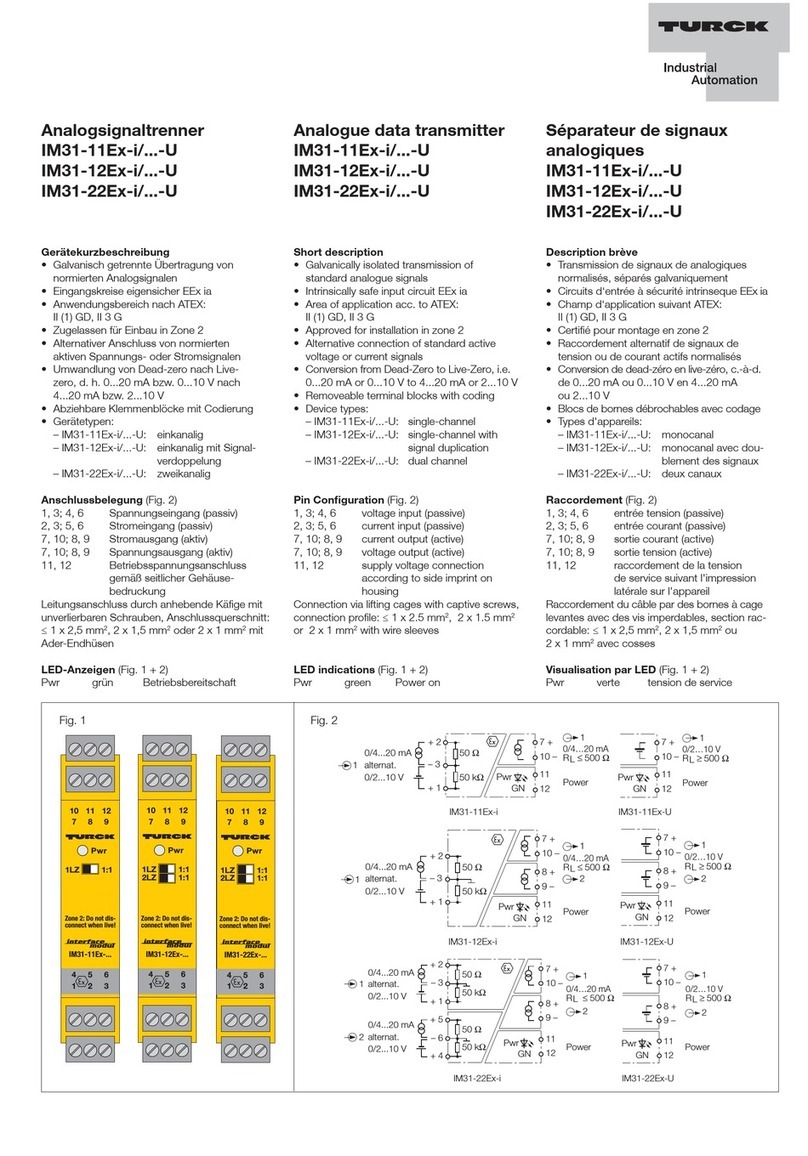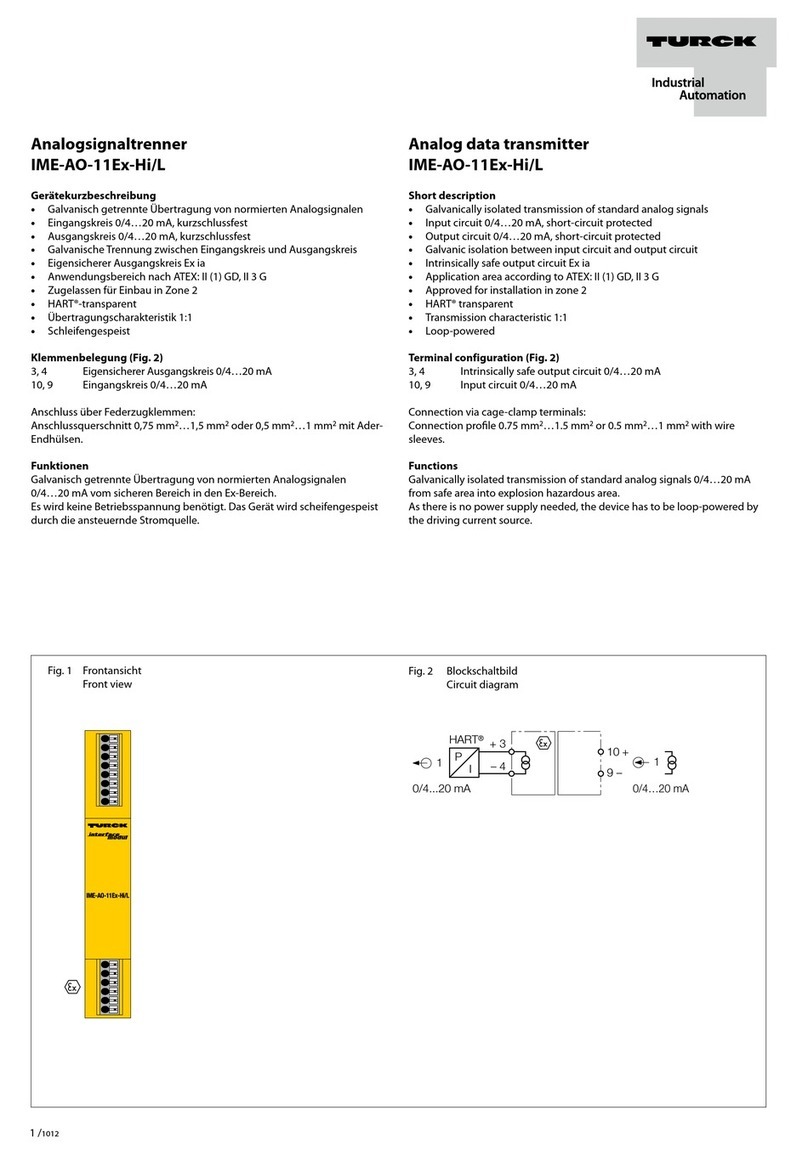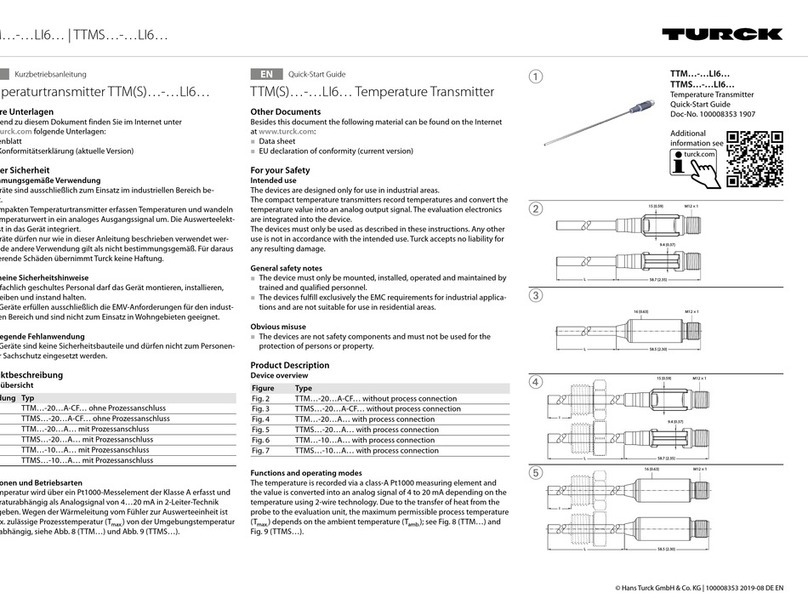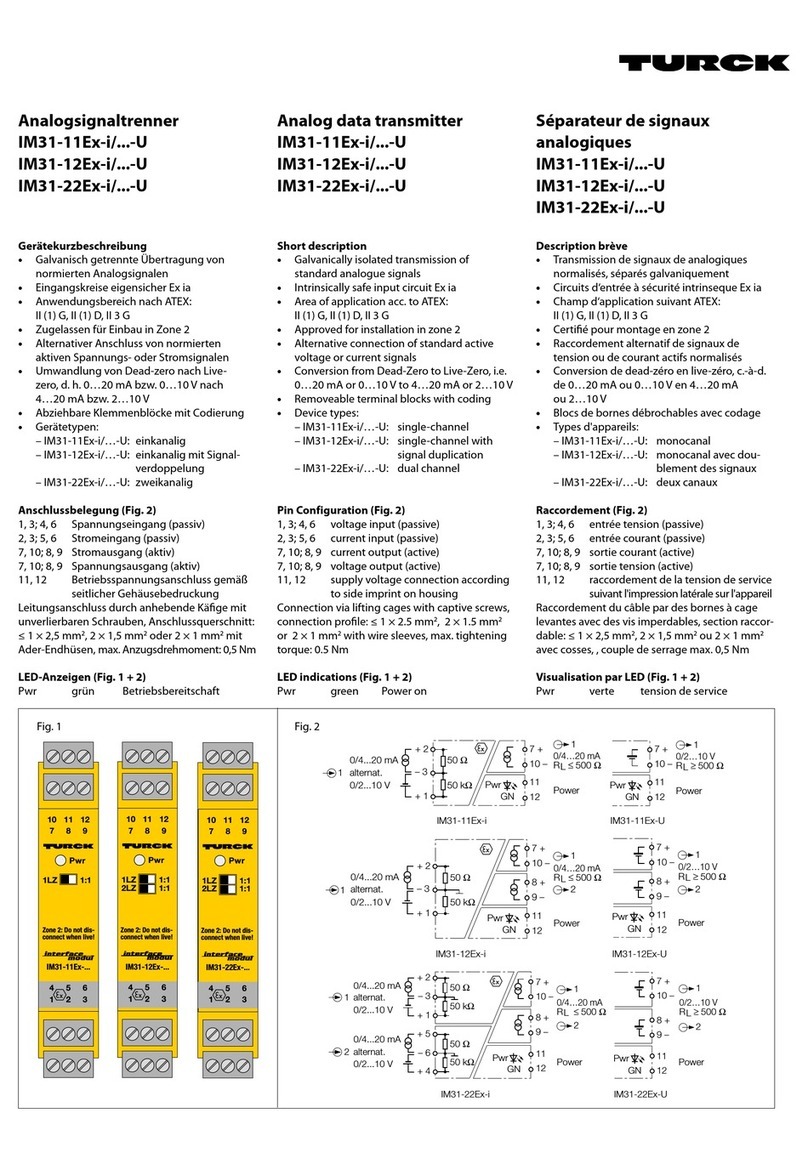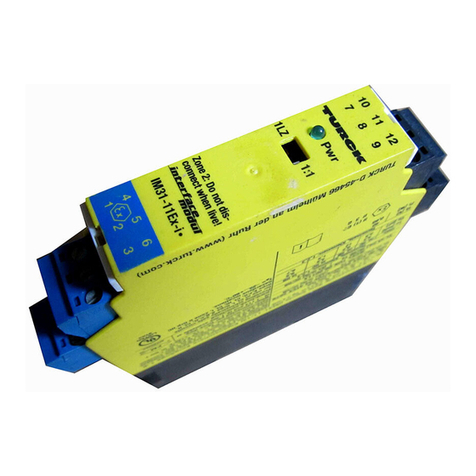
8
Operating Instructions
Hans
T
urck
GmbH
&
Co
.
KG
|
T
+49
208
4952-0
|
F
+49
208
4952-264
|
[email protected] |
www.turck.com
6 Operating Instructions
6.1 General
The device must be registered online: www.turck.com/SIL or with the supplied SIL registra-
tion card. This must be filled in with all required information upon receipt and sent to Turck.
The device must only be carried out, fitted, installed, operated, commissioned and main-
tained by trained and qualified personnel.
The device is not specified for acertain application. Make sure that application-specific as-
pects are considered.
Data from other documents, e.g. data sheets,is not valid for functional safetyoperation.
Devices must be used in cabinets in an typicalindustrial field environment only. The follow-
ingrestrictions describe the operation and storage conditions:
Ensure that the environment complieswith the following ratings
Minimum ambienttemperature -25 °C
Maximum ambient temperature 70 °C
Minimum storage temperature -40 °C
Maximum storage temperature 80 °C
Maximum air humidity 95 %
Minimum air pressure 80 kPa
Maximum air pressure 110 kPa
The average temperature over a long period of time directly on the exterior sidewall of the
housing must be maximum 40 °C.
ūThe temperature on the exterior sidewall of the housing can deviate considerably from the
temperature in the control cabinet.
ūThe temperature on the exterior sidewall of the housing must be observed in a steady state.
ūIn case the temperature on the exterior sidewall of the housing is higher, the failure rates
from from „5.3 FMEDA results“ on page 7 must be adjusted:
For a higher average temperature of 60°C on the exterior sidewall of the housing, the failu-
re rates are multiplied by an experience factor of 2.5.
Ensure that sufficient heat dissipation is provided.
Protect the device from radiated heat and severe temperature fluctuations.
Protect the device from dust, dirt, moisture, shock, vibration, chemical stress, increased
radiationand other environmental influences.
Ensure a degree of protection of at least IP20 according toIEC 60529 at the mounting
location.
Ensure that the electromagnetic stress does not exceed the requirements of IEC61326-3.1.
If there is avisible error, e.g. defective housing the device must not be used.
During operation of the device, surface temperatures may occur that could lead to burns if
touched.
The device must not be repaired. If problems occur with regard to functional safety, Turck
must be notified immediately and the device must be returned immediately to:
Hans Turck GmbH & Co. KG
Witzlebenstraße 7
45472 Mülheim an der Ruhr
Germany






